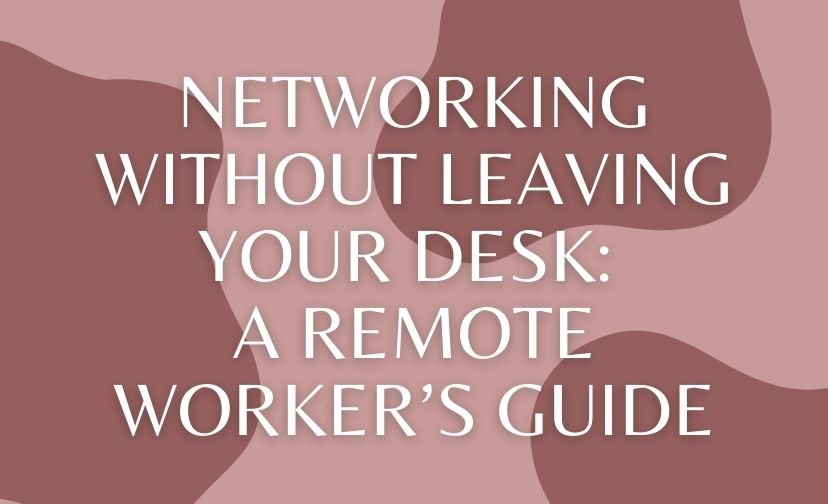Picture this: you’re nestled in your favorite corner of the couch, a steaming cup of coffee within arm’s reach, and the world at your fingertips. In this digital age, the boundaries of networking have expanded beyond the confines of physical spaces.
Remote networking has become a game-changer for professionals seeking connections without the need for in-person interactions. But why is it so crucial, especially for remote workers? Let’s dive into the world of virtual connections and discover how you can network like a pro, all from the comfort of your home.
Understanding Remote Networking
As the world embraces the flexibility of remote work, understanding the nuances of remote networking becomes essential. It’s not just about exchanging virtual business cards; it’s about creating meaningful relationships that can enhance your professional journey.
What is Remote Networking?
Remote networking is the art of building and nurturing professional relationships through digital platforms. It involves engaging with peers, industry leaders, and potential collaborators online.
Whether it’s through social media, webinars, or virtual conferences, remote networking allows individuals to connect across geographical boundaries, breaking down barriers that once limited professional growth.
To effectively engage in remote networking, leverage platforms like LinkedIn to join relevant groups and participate in discussions. This can help you stay visible and build connections with like-minded professionals.

The Importance of Networking for Remote Workers
For remote workers, networking is more than just a career advancement tool; it’s a lifeline to the professional world.
It offers opportunities for collaboration, learning, and career growth that might otherwise be inaccessible. By building a strong network, remote workers can tap into resources, gain insights, and even find mentors who can guide their careers.
Regularly schedule virtual coffee chats with your connections to maintain relationships and keep the conversation going. This informal setting can lead to unexpected opportunities and deeper connections.
Essential Networking Tips for Remote Workers
To navigate the world of remote networking successfully, it’s important to adopt strategies that align with your professional goals. Here are some tips to get you started:
Engaging on Professional Platforms
Professional platforms like LinkedIn are pivotal for remote networking. Beyond maintaining an updated profile, active participation is key.
Comment thoughtfully on posts, share relevant content, and engage with your network through personalized messages. These actions not only increase your visibility but also establish you as a knowledgeable professional in your field.

Joining Online Communities
Online communities provide a vibrant space for remote workers to connect with peers who share similar interests and challenges.
Platforms such as Slack and Discord host industry-specific groups where you can exchange ideas, seek advice, and even collaborate on projects. Being part of these communities can significantly broaden your professional horizons.
- Participate in discussions regularly to stay informed about industry trends.
- Offer your expertise to help others and build credibility.
- Network with members who can provide unique insights or opportunities.
Participating in Virtual Networking Events
Virtual networking events have become a staple in the remote work landscape. From webinars to online conferences, these events offer a platform to learn from experts and connect with fellow attendees.
Actively participating in Q&A sessions and following up with speakers or participants can create lasting professional relationships.

Utilizing Online Networking Tools
The digital realm offers a plethora of tools designed to facilitate networking. Tools like Zoom for video calls, Calendly for scheduling meetings, and LinkedIn for maintaining professional connections are indispensable for remote workers. These tools streamline communication, making it easier to build and nurture relationships without the need for physical presence.
| Tool | Purpose | Benefits |
|---|---|---|
| Professional Networking | Connect with industry leaders and peers | |
| Zoom | Video Conferencing | Facilitate face-to-face virtual meetings |
| Slack | Community Engagement | Join industry-specific discussions |
Building Meaningful Connections
Networking isn’t just about adding contacts to your list; it’s about cultivating relationships that are mutually beneficial and enduring.
Creating Mutually Beneficial Relationships
Approach networking with the mindset of offering value. Whether it’s sharing knowledge, providing support, or connecting others, a give-and-take approach fosters stronger connections. Seek opportunities where both parties can benefit, creating a foundation for long-lasting professional relationships.

Personalizing Your Outreach
When reaching out to new connections, personalization is key. Tailor your messages to reflect genuine interest and understanding of the recipient’s work. Highlight common interests or mutual connections to establish rapport. This thoughtful approach sets the stage for meaningful interactions.
Following Up and Nurturing Relationships
After establishing a connection, it’s crucial to maintain it. Regular follow-ups, whether through emails, messages, or virtual catch-ups, keep the relationship alive. Share updates, congratulate achievements, and offer assistance when needed. Consistent engagement strengthens bonds and keeps you top of mind.
Create a follow-up schedule to regularly touch base with your connections. This ensures you remain an active part of their professional network and opens doors for future collaborations.

Overcoming Networking Challenges
While remote networking offers numerous advantages, it also comes with its own set of challenges. Here’s how to tackle them:
Combating Isolation
Remote work can sometimes lead to feelings of isolation. To counter this, engage actively in online communities and participate in virtual events. These interactions provide a sense of belonging and community, reducing the feeling of being disconnected from the professional world.
Managing Time Zone Differences
Networking with professionals across different time zones requires careful planning. Use scheduling tools to find mutually convenient times for meetings and be flexible with your availability. This consideration demonstrates respect for your connections’ time and enhances collaboration.

Staying Visible and Engaged
In the digital realm, staying visible is crucial. Regularly update your professional profiles, share insights, and participate in discussions. Visibility not only keeps you on the radar of potential collaborators but also establishes you as an active and engaged professional in your field.
Exploring Online Networking Events
Online networking events offer a dynamic platform to connect with industry leaders and peers, providing a wealth of opportunities for growth and collaboration.
Types of Networking Events to Attend
From webinars and workshops to virtual conferences and meetups, the variety of online networking events is vast. Each type offers unique benefits, such as learning from experts, engaging in discussions, or expanding your professional network. Choose events that align with your career goals and interests.

Maximizing Your Event Experience
To make the most of online networking events, come prepared. Research speakers, prepare questions, and engage actively during sessions. Follow up with participants post-event to continue the conversation and solidify connections. This proactive approach ensures you extract maximum value from each event.
Keep a dedicated notebook or digital document to jot down key takeaways and contacts from each event. This helps you retain valuable insights and track your networking progress.
Leveraging Online Tools for Networking
The right tools can significantly enhance your remote networking efforts, making it easier to connect and collaborate with professionals worldwide.
Best Platforms for Virtual Networking
Platforms like LinkedIn, Meetup, and Eventbrite are excellent for discovering networking opportunities and connecting with professionals in your industry. These platforms offer features that facilitate introductions, discussions, and collaborations, making them invaluable for remote networking.

Utilizing Productivity Tools for Networking
Productivity tools such as Trello for task management and Evernote for note-taking can streamline your networking activities. Use these tools to organize contacts, schedule follow-ups, and track networking goals. This organization ensures you remain efficient and effective in your networking endeavors.
Inspiring Stories of Successful Remote Networking
Real-life stories of successful remote networking can serve as motivation and guidance for your own networking journey.

Case Studies of Effective Networking
Consider the story of a freelance designer who, through strategic remote networking, landed a major client that transformed her business. By actively participating in industry forums and attending virtual design conferences, she connected with potential clients and showcased her expertise, leading to lucrative opportunities.
Lessons Learned from Networking Experiences
Successful networkers often emphasize the importance of authenticity, persistence, and value-driven interactions. By learning from their experiences, you can refine your networking strategies and avoid common pitfalls, paving the way for a thriving professional network.





